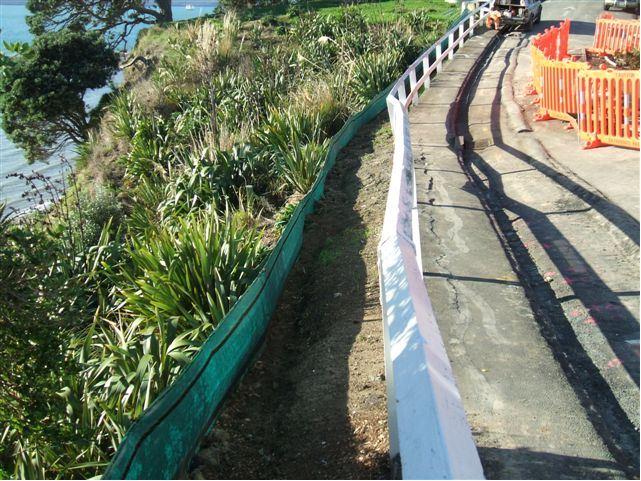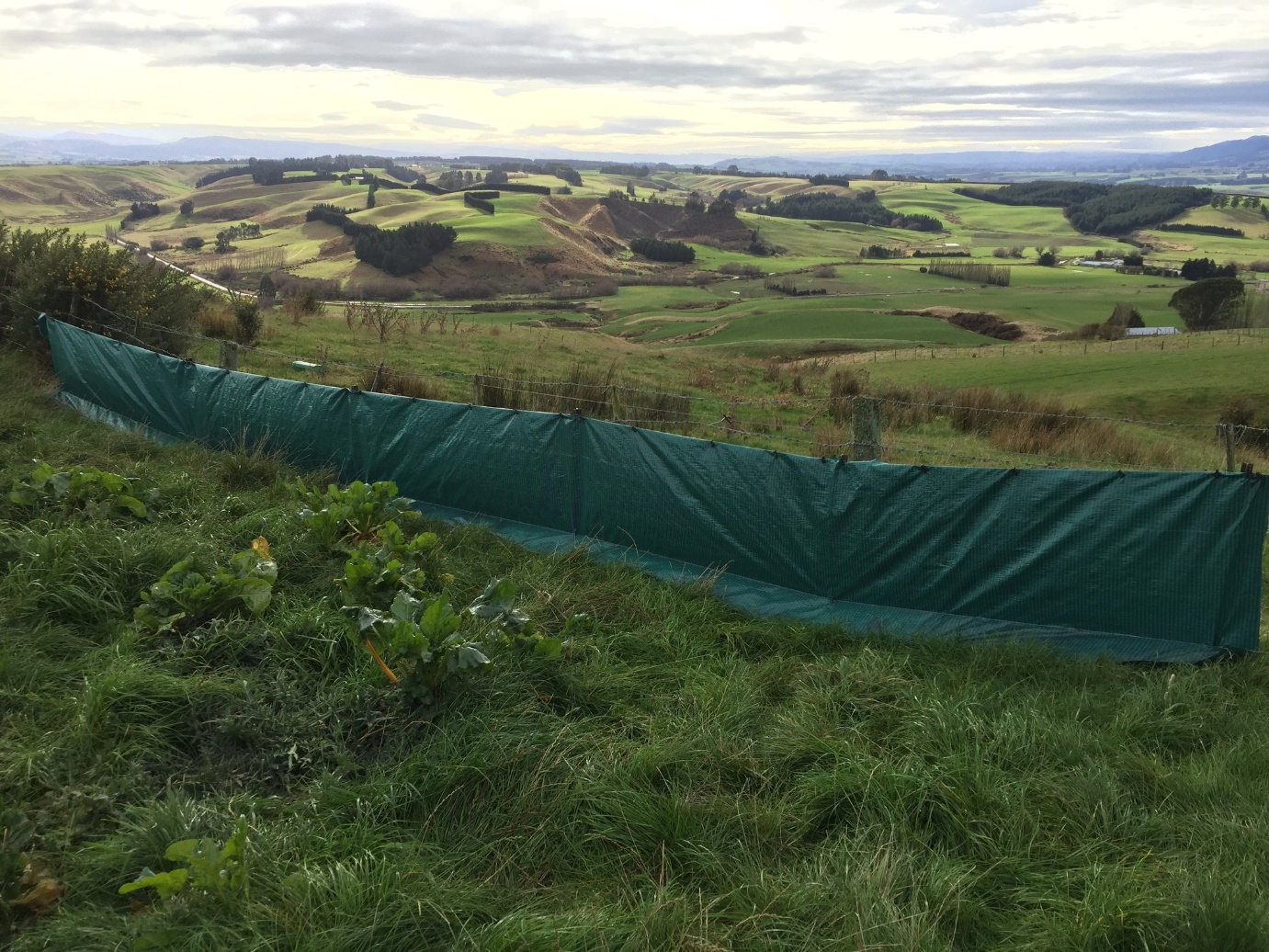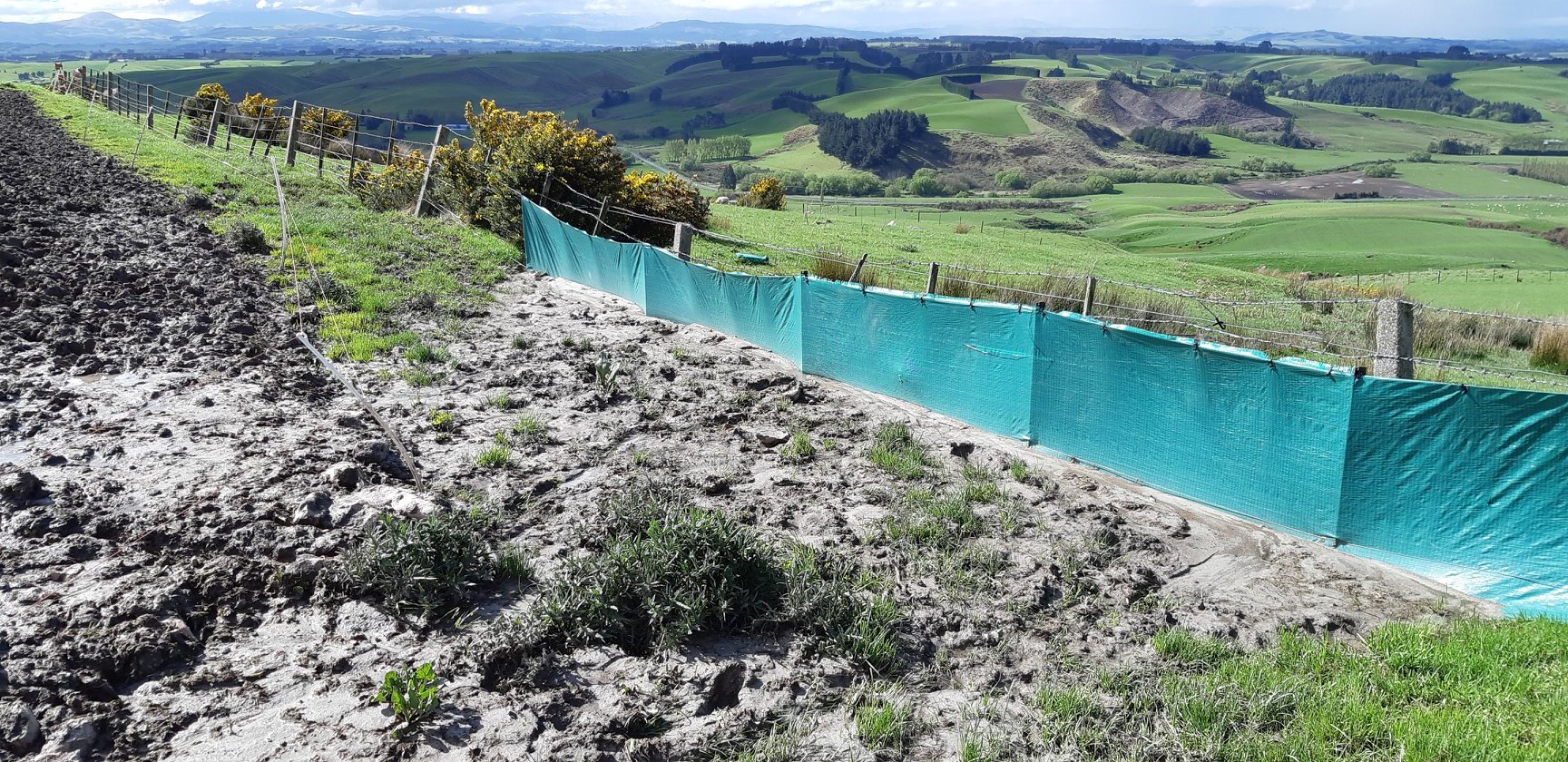Silt fences
What
A silt fence is a temporary barrier of woven geotextile fabric that captures mainly coarse sediments carried in overland flow.
Silt fences temporarily impound sediment-laden runoff, slowing down the flow rate and allowing sediment to settle out of the water. They cannot treat concentrated flows of sediment-laden water. These situations use sediment retention ponds and decanting earth bunds.
Silt fences detain runoff flows so that transported sediment can be deposited by settlement. They are not used to filter sediment out of runoff.
Silt fences have become common practice in landscaping, earthworks, and construction sites to prevent sediment loss. As they are a simple, low cost solution, there application within a farm setting should be just as effective.

Image Source: Environment Canterbury
Why
Silt fences are mainly used in the following situations:
- To control sediment by intercepting overland flow
- If a site is low gradient, or is confined with a small contributing catchment, such as short batter fills and around watercourses
- To mark out the boundary limits of disturbance on earthworks sites, such as riparian areas or bush reserves.
- If installing an earth or topsoil bund would destroy sensitive areas, such as bush and wetlands.
Silt fences can have the following limitations:
- Silt fences do not capture many soil particles finer than 0.02 mm in diameter (for example fine silts and clays, including loess). This is because of the short time that water is detained and the relatively large pore size of most of the fabrics.
- The pores in the silt fence fabric become clogged relatively quickly with fine textured sediments, so the fabric becomes impermeable. It may be necessary to add additional reinforcing as in a super silt fence (chain link fence).
- Silt fences must not be installed across watercourses, in areas of concentrated flows or used as check dams in channels. Only use silt fences for overland flows.
- As installation of silt fences requires excavation and disturbance of soil, carefully consider whether this is the right tool for the situation. Close to waterway margins the excavation required to install the silt fence can potentially affect water quality, so consider other tools, such as compost bunds, that may have less risk.
See how to install a silt fence in this video by Auckland Council.
Examples
Pomahaka Catchment Group - Otago
The Pomahaka River flows from the Old Man Range to the Clutha River fed by a 2020 square hectare catchment and covering 304 farms. The catchment group was formed in 2014 after the Otago Regional Council report which identified E. coli and nitrate problems in 2012.
Prior to winter 2019 the Pomahaka Catchment Group installed sediment fencing on a property in the catchment. There wasn’t much sediment movement through the winter, but with the wet spring that year the sediment fencing worked very well as shown in these before and after photos.

Image Source: Pomahaka Catchment Group

Image Source: Pomahaka Catchment Group
References
Wear, L. R., Aust, W. M., Bolding, M. C., Strahm, B. D., & Dolloff, C. A. (2013). Effectiveness of best management practices for sediment reduction at operational forest stream crossings. Forest Ecology and Management, 289, 551-561.